May 12th 2022
Don’t let Mercury get in your way
Whether we are referring to ongoing operations or decommissioning, mercury is present in all aspects of the oil and gas industry. MRT System are experts in technology and solutions for processing mercury contaminated material in a safe and efficient way.
Mercury has a considerable impact on the oil & gas industry. The presence of mercury in all processes must be predicted, measured and assessed in a safe manner. From exploration, drilling, transport and refining to dismantling and recycling oil and gas facilities. Examples of where mercury accumulates are in filters / catalysts material, pipes and hoses, storage tanks, sludges / fluids and equipment like pumps etc.
Sören Potrykus, an expert at metal recycling company GMR, gives the following assessment: “Waste contaminated with mercury, for example from natural gas production, will be an important issue for at least the next 20 years. GMR has been using distillation technique from MRT System for more than 28 years without problems or major incidents. It feels safe.”
How to determine the presence of mercury
Analytical techniques for detecting mercury have improved in recent years. A leachate procedure is an appropriate method to determine content values. This method is generally approved in accordance with SS-EN12457-2 but local regulations may apply.
The concentration of mercury is relatively low in the oil and gas industry, as far as the crudes are concerned. The database of the oil and gas industry association IPIECA shows that 64 per cent of the world’s crudes have Mercury levels of 2 wt ppb or less, although a small fraction, 3 per cent, have mercury levels above 100 wt ppb.
How to extract mercury safely
Distillation involves heating to 700°C, causing the mercury to be evaporated and extracted from the processed material. The mercury condenses and becomes 99.9999 per cent pure. Cleaning takes place in an entirely closed system, using automatic processes that minimize the human error factor. For large volumes, the system can operate 24/7.
Patrick Strandqvist, a mercury recovery expert at MRT System, explains his company’s proven distillation technique for extracting mercury in the MRT BPD 1000. This technique not only safeguards the work environment for employees, and the surrounding environment, but also helps companies to comply with their sustainability ambitions and the UN’s sustainability goals. An important aspect is also that there are financial gains to be made for companies using this process.
How to handle large objects
MRT System has developed a comprehensive concept suitable for applications in the oil & gas industry. Filters and catalysts material are processed in MRT BPD 1000 without preparation. The same goes for hoses, smaller pipes etc, but must first be shredded into manageable fractions. Tanks and containers and larger pipes must undergo internal surface cleaning by pigging technique. Residues are then processed in BPD 1000. Fluids are processed in MRT Filtration, solids and sedimentations are then processed in BPD 1000.
How to decimate tons to kilos
Beside the safety aspects, the main benefit with the MRT Concept is decimation of weight and volume. Why send hundreds of tons to disposal when you can decimate it to a few kilos? Patrick Strandqvist gives this vivid illustration: “An example from another industry shows that 200 tons of bulbs can be reduced to 1 litre of pure mercury. If we compare the cost of sending 200 tons of contaminated waste or 15 kg of mercury to disposal you quickly realise that there are large profits to be made.”
Do you want to find out more?
Please contact Patrick Strandqvist for further information.






